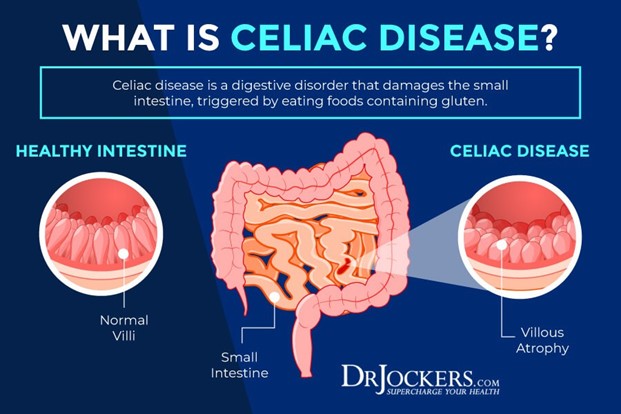Heparin 7,000 units is ordered. Heparin 5,000 units per ml is available. How many milliliters (ml) should the nurse administer?
(Do not round)
The Correct Answer is ["1.4"]
We know that 7,000 units is equivalent to 5,000 units per ml. So, we can set up the proportion:
7,000 units / 5,000 units per ml = x ml / 1 ml x = 7,000 / 5,000
x = 1.4
Therefore, the nurse should administer 1.4 milliliters (ml) of heparin.
Nursing Test Bank
Naxlex Comprehensive Predictor Exams
Related Questions
Correct Answer is B
Explanation
A likely cause of a low sodium level (hyponatremia) of 128 mEq/L is the administration of hypotonic IV fluids. Hypotonic IV fluids have a lower concentration of solutes compared to the body's fluids, which can lead to dilutional hyponatremia. When these fluids are administered, they can cause water to move into the cells, diluting the sodium concentration in the bloodstream.
Correct Answer is D
Explanation
Celiac disease is an autoimmune disorder characterized by an abnormal immune response to gluten, a protein found in wheat, barley, and rye. When individuals with celiac disease consume gluten, their immune system reacts by damaging the lining of the small intestine, specifically the villi. The damaged villi are unable to effectively absorb nutrients from food, leading to malabsorption and a variety of symptoms.

Whether you are a student looking to ace your exams or a practicing nurse seeking to enhance your expertise , our nursing education contents will empower you with the confidence and competence to make a difference in the lives of patients and become a respected leader in the healthcare field.
Visit Naxlex, invest in your future and unlock endless possibilities with our unparalleled nursing education contents today
Report Wrong Answer on the Current Question
Do you disagree with the answer? If yes, what is your expected answer? Explain.
Kindly be descriptive with the issue you are facing.
